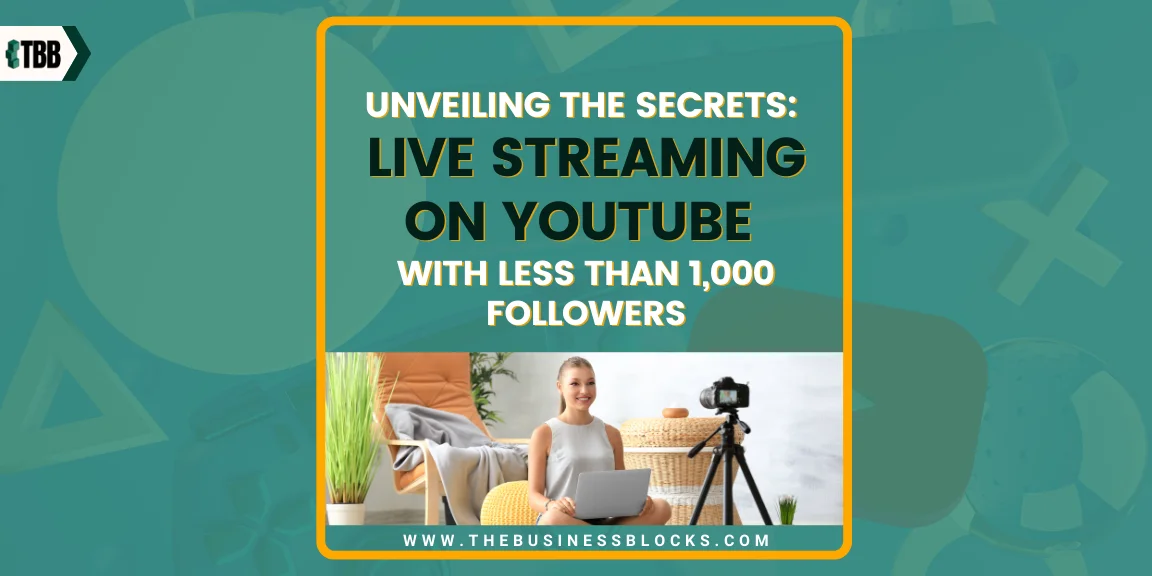Are you someone who wants to have a successful live-streaming channel on YouTube but doesn’t know where to start? If so, then this is the article is for you. Join us as we unveil all the secrets and provide essential tips that will help boost your live-streaming success even with less than 1,000 followers. With our comprehensive advice, you can ensure your live stream starts on the right foot- even if you’re just beginning your online journey. So read on and get ready to uncover what it takes to make it big in the world and never miss a moment of YouTube live streams!
Table of contents
- Are you a YouTuber with under 1,000 followers and want to take streaming on YouTube to the next level?
- What is Live Streaming and Why You Should Try It?
- The 1,000 Subscribers Barrier
- How to Live Stream on YouTube With Less Than 1,000 Followers
- Make the Most of Your Live Stream with These Tips
- Start Small and Build Your Way Up
- Why Does YouTube Have This 1,000 Subscribers Barrier Policy?
- Why Use Mobile for Livestreaming?
- Limitations of Mobile Livestreaming
- Free Mobile Apps for Livestreaming
- Comparison of Apps
- Tips on How to Choose the Right App
- Frequently Asked Questions About YouTube Livestreaming and Mobile Apps
- Conclusion
Are you a YouTuber with under 1,000 followers and want to take streaming on YouTube to the next level?
Unlock the secrets of live streaming with this article, created for content creators who have less than 1,000 subscribers on YouTube. We’ll show you how to reach more viewers in real-time live stream, grow your audience, and gain traction that will follow you through your channel’s entire lifetime.
Skip the trial and error of finding out what works for yourself from scratch – get ahead of the game quickly and strategically. With our tips and tricks, you can make sure your viewers never miss a beat!
Did you know?
- 1.2K channels on YouTube have descriptions including “van life,” “van living,” “life in a van,” or “living in a van.”- Source
- By 2023, it’s forecasted that live video viewers in the US will reach 163.4 million. (Insider Intelligence)
- The esports competition “League of Legends Champions Korea” had the most hours of watched live streams at the beginning of 2022, with over 44 million hours watched. (Streamlabs)
Read on and learn how to livestream on YouTube without 1 thousand followers!
What is Live Streaming and Why You Should Try It?
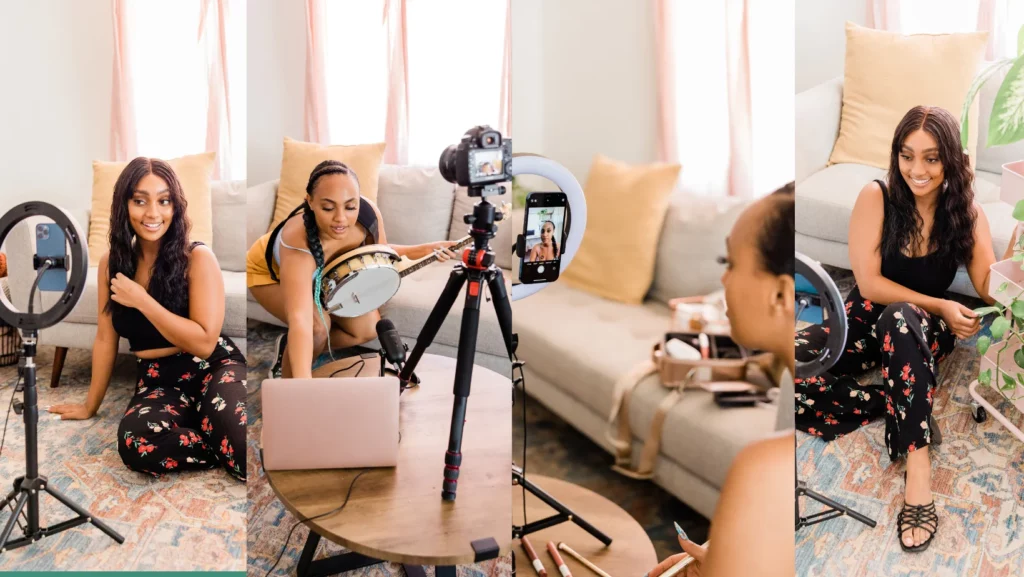
Live streaming is a popular way to create content on YouTube. It is a video format that allows you to broadcast yourself or your event in real time. Live streaming is especially helpful for content creators with fewer than 1,000 followers. With live streaming, those viewers who have already subscribed to your YouTube channel can watch the video as it happens without having to wait for editing and other post-production processes.
It provides an interactive, engaging experience for viewers as they watch videos and engage with you in real-time. This type of connection can be invaluable, especially when it comes to building your brand and growing your audience.
With live streaming, you have the opportunity to connect with viewers uniquely. You can create an atmosphere of trust and engagement that can be hard to achieve with pre-recorded YouTube videos.
Moreover, there are YouTube partner programs with ad revenue and multiple channels. With live streaming, you can easily access those benefits and monetize your content right away. This means that even with a small following, you can start making money off of your live streams as soon as you have the necessary setup in place.
The 1,000 Subscribers Barrier
Upon creating your YouTube channel and YouTube account, you must reach 1,000 subscribers before being eligible to live stream your content. This can be a daunting task, especially for those just starting.
However, don’t worry! You still have the chance to livestream and grow your audience with less than 1,000 followers. We will show you how!
How to Live Stream on YouTube With Less Than 1,000 Followers
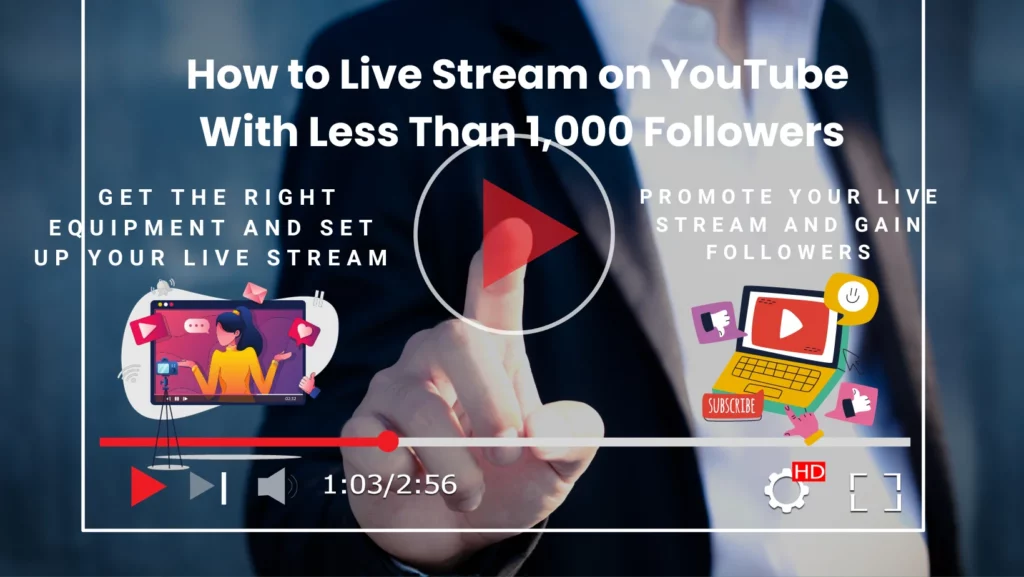
Even without a large following, you can start streaming on YouTube right away. Here’s how:
Step 1: Get the Right Equipment and Set Up Your Live Stream
To begin live streaming on YouTube with less than 1,000 followers, you will need to have the proper setup in place. The first part of this is getting the right equipment. You will need a microphone, and potentially some good lighting, a webcam, or a Phone camera for your Youtube Studio. Once you have the necessary equipment, you can set up your live stream on YouTube by following these steps:
- Log into your YouTube account and navigate to Creator Studio.
- Click “Live Streaming” in the left-hand navigation menu and select “Events.”
- Choose “New Live Event” and enter the details for your live stream, such as Title, Description, Thumbnail Image, and Date and time.
- Select the correct encoding settings (such as resolution and bitrate) for your stream.
- Click “Create Event” to generate a unique URL for your live stream.
Step 2: Promote Your Live Stream and Gain Followers
Now that you have the right equipment and your live stream is ready to go, it’s time to start promoting it. There are several free and paid strategies you can use to get more viewers and followers on YouTube, even with less than 1,000 subscribers.
Free Strategies
• Use social media platforms like Twitter and Instagram to promote your live stream and engage with viewers directly.
• Reach out to content creators who have a similar audience and see if they are willing to collaborate with you on a live stream or mention it in their content.
• Post regular updates about your upcoming live streams on YouTube and other social media platforms.
Paid Strategies
• Create targeted ads to promote your live stream in the days leading up to it.
• Invest in influencer marketing campaigns with YouTubers who have similar audiences as you.
• Utilize email marketing and create a list of subscribers that you can inform regarding upcoming live-stream events.
Make the Most of Your Live Stream with These Tips
Now that you know how to livestream on YouTube with less than 1,000 followers, it’s time to make sure your stream is successful. Here are a few tips to keep in mind:
• Have a plan for your live stream and focus on engaging with viewers.
• Ask questions and solicit feedback from your live-stream audience.
• Have a call-to-action (CTA) for viewers at the end of the live stream, such as subscribing to your channel or following you on social media.
• Take time to thank and acknowledge each viewer who joins your broadcast.
• Consider using a third-party tool to help you with streaming, such as OBS Studio or Streamlabs.
By following these tips and making the most of your livestream, you can start building an engaged audience even with fewer than 1,000 subscribers on YouTube. Live streaming is a great way to connect with viewers in real-time and grow your channel. Use these tips and strategies to make sure you’re optimizing your live streams for success!
Start Small and Build Your Way Up
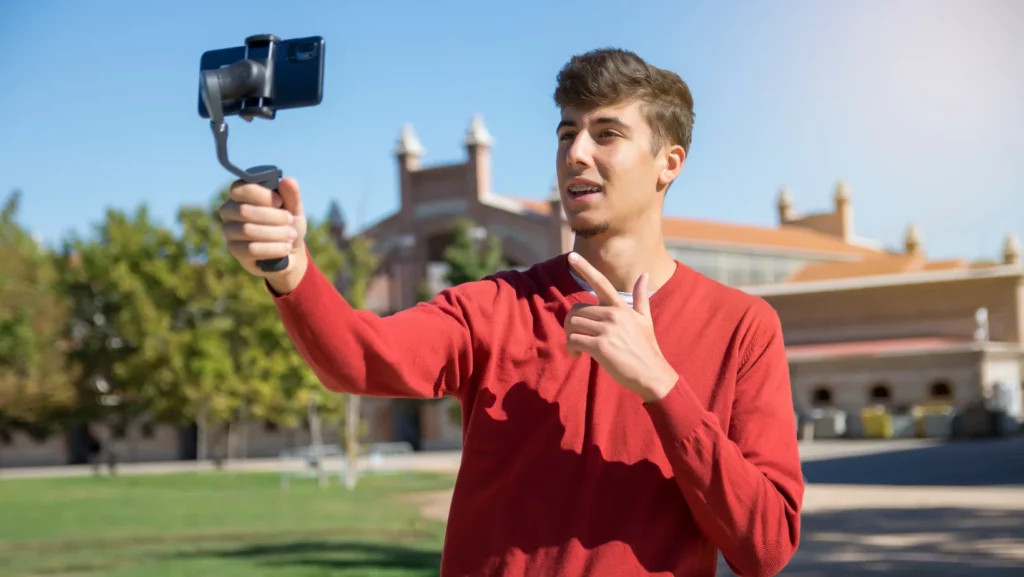
If you’re just starting with live streaming, don’t be discouraged if the viewership isn’t overflowing right away. Here are some tips for you:
- Take advantage of other social media platforms: Leverage your current presence on Twitter, Instagram, and Facebook to reach more people in real time. You can post about upcoming live streams and link back to the stream on YouTube.
- Make sure you have a good internet connection: Live streaming requires you to have a fast, reliable internet connection. If your signal is weak or spotty, viewers may experience buffering and lag which can be a huge turn-off.
- Create engaging content: People are more likely to tune into your live stream if it’s entertaining, informative, and engaging. Think about topics that your viewers will be interested in and create content around those topics. Make sure to also have engaging video descriptions.
- Interact with your viewers: Live streaming allows you to directly interact with viewers in real time, something that is not possible with pre-recorded videos. Ask questions, answer comments, and thank viewers for tuning in!
- Promote, promote, and promote: Promote your live stream ahead of time and during the stream itself. You can do this on your other social media accounts, in YouTube videos, or even by sending out emails to those who have subscribed to your channel.
Why Does YouTube Have This 1,000 Subscribers Barrier Policy?
YouTube’s policy requiring channels to have at least 1,000 subscribers to live stream from mobile devices is primarily a measure to ensure quality and safety. The platform aims to minimize spam and low-quality content, which can be more easily generated from mobile devices. This threshold acts as a filter to ensure that only more established and responsible creators can use the YouTube mobile live-stream feature.
It also helps YouTube maintain a certain level of content quality, as channels with 1,000 or more subscribers are more likely to produce content that adheres to YouTube’s community guidelines.
Impact on Small Creators
The 1,000-subscriber requirement can be a significant hurdle for small creators who are still growing their audience. According to an article on MakeUseOf, YouTube has made some changes to its monetization policy as of June 13, 2023, which allows creators with 500 subscribers to qualify for fan funding and other features. However, the rules for mobile live streaming remain the same, requiring a minimum of 1,000 subscribers.
This can be particularly challenging for creators who rely on live streaming as a primary form of content. For example, creators who primarily stream or create Shorts on YouTube tend to have high watch time relative to the number of followers or how many subscribers they have. The policy can thus limit their ability to engage with their audience in real-time, which is crucial for building a community.
Workarounds and Alternatives
While the 1,000-subscriber requirement is a barrier, there are some workarounds and alternatives. One option is to live stream from a desktop or laptop, as the 1,000-subscriber requirement only applies to mobile live streaming. Another alternative is to use third-party livestreaming software that can broadcast to YouTube, bypassing the mobile app’s restrictions.
Some popular options include OBS Studio and Streamlabs mobile app. These platforms often offer more advanced features than YouTube’s native mobile live streaming service, such as custom overlays and multiple camera angles.
Legal Considerations
If you’re considering using third-party software or other workarounds to bypass YouTube’s 1,000-subscriber requirement, it’s essential to be aware of the legal implications. Always read the terms of service for both YouTube and any third-party software you’re using. YouTube’s terms of service prohibit circumventing or disabling any features or security measures, and doing so could result in the termination of your account. Therefore, while workarounds exist, they come with their own set of risks and should be used cautiously.
By understanding the rationale behind YouTube’s policies and exploring alternative methods responsibly, small creators can still find ways to grow and engage with their audience.
Why Use Mobile for Livestreaming?

Convenience Factor
Let’s face it, we all love convenience. And when it comes to live streaming, nothing beats the ease of pulling out your smartphone and hitting that “Go Live” button. You don’t need a fancy setup or a team of tech experts to get started. Your smartphone is a powerful tool that fits right into your pocket, ready to capture high-quality videos and live streams anytime, anywhere.
Imagine you’re at an industry event, and you want to share some behind-the-scenes action with your audience. With a mobile device, you can go live in seconds, capturing the energy and excitement of the moment. No need to lug around heavy equipment or spend time setting up. It’s as simple as point, shoot, and stream!
Accessibility
The beauty of mobile live streaming is that it opens up a world of possibilities for everyone. You don’t need a high-end camera or a professional studio setup to reach your audience. All you need is a smartphone and a decent internet connection. This makes live streaming incredibly accessible, especially for small businesses or individual creators who may not have the resources for a more elaborate setup.
Moreover, the ubiquity of smartphones means that virtually anyone can be both a creator and a viewer. This democratization of media is a game-changer, leveling the playing field and giving everyone a voice. Whether you’re a local artist showcasing your latest work or a small business owner sharing a day in the life, mobile live streaming allows you to connect with your audience directly and authentically.
Quality of Mobile Cameras
Remember the days when mobile cameras produced grainy, low-res videos? Those days are long gone. Today’s smartphones come equipped with cameras that can rival some DSLRs. Devices like the iPhone 11 Pro, Google Pixel 3, and Galaxy S10 offer video recording in up to 4K HD at 1080p. This means you can capture crisp, clear, and vibrant videos without needing a separate camera.
But it’s not just about the hardware. Advances in software also play a role in enhancing video quality. Features like image stabilization, low-light capabilities, and advanced autofocus contribute to a superior live-streaming experience. So, whether you’re streaming an indoor event or capturing the beauty of a sunset, you can trust your smartphone to deliver high-quality video.
Limitations of Mobile Livestreaming
While mobile live streaming offers numerous advantages, it’s not without its challenges. One of the main issues is internet connectivity. Unlike a dedicated camera setup that can use wired Ethernet connections, mobile live streaming often relies on mobile data or Wi-Fi, which can be less reliable. A poor or unstable connection can lead to buffering issues, disrupting the viewer experience.
Battery life is another concern. Livestreaming can be a power-hungry activity, draining your phone’s battery faster than usual. It’s crucial to ensure your device is fully charged or connected to a power source, especially if you plan to stream for an extended period.
Lastly, distractions like phone alerts and notifications can interrupt your stream, making you appear unprofessional. To avoid this, it’s advisable to turn on ‘Do Not Disturb’ mode and mute all notifications before going live.
Despite these limitations, the benefits of mobile live streaming often outweigh the drawbacks, especially when you consider the convenience, accessibility, and quality that mobile devices offer. With a little planning and awareness of these challenges, you can make the most of your mobile livestreaming experience.
Free Mobile Apps for Livestreaming
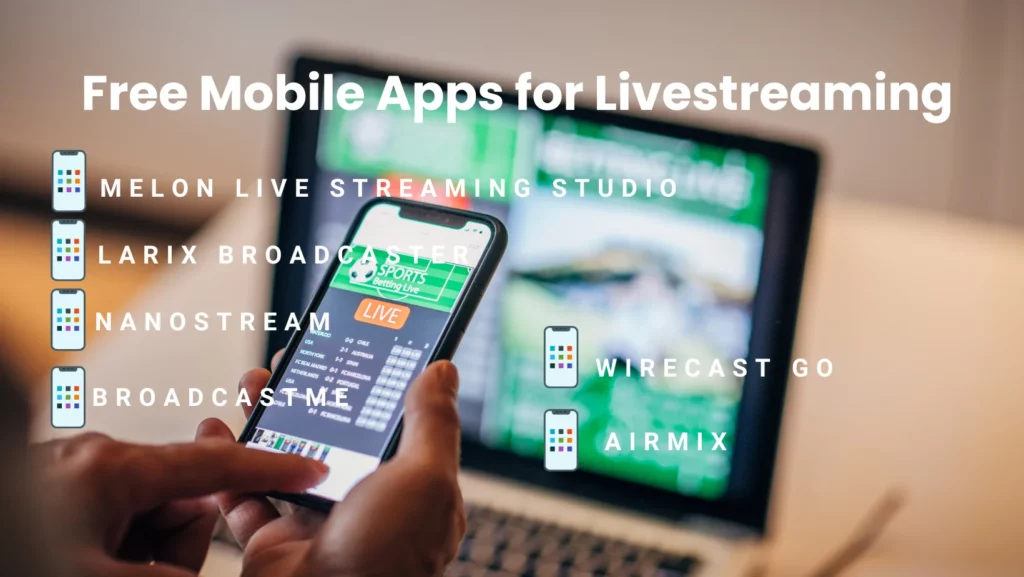
Live streaming has become an essential tool for content creators, businesses, and even casual users who want to share their experiences in real-time. While YouTube has a 1,000-subscriber requirement for mobile live streaming, several third-party apps bypass this limitation. These apps offer a range of features, from basic streaming capabilities to advanced functionalities like multi-camera setups and real-time analytics. Below, we delve into some of the best free mobile apps for live streaming.
Melon Live Streaming Studio
As of my last update in September 2021, Melon Live Streaming Studio is a web-based platform designed for easy live streaming. It offers a user-friendly interface that allows you to stream directly to platforms like YouTube, Facebook, and Twitch without the need for additional software.
Features:
- Multi-Platform Streaming: Melon allows you to stream to multiple platforms simultaneously.
- Custom Branding: You can add your logos, backgrounds, and themes.
- Guest Invites: The platform enables you to invite guests into your live stream easily.
- Screen Sharing: Share your screen or specific applications during the live stream.
- High-Quality Video and Audio: Melon supports HD video and high-quality audio.
Pros:
- Easy to use with a simple interface.
- No software download is required.
- Allows multi-platform streaming.
Cons:
- Limited advanced features compared to other professional software.
- Some features are behind a paywall.
Other Popular Apps
Based on a comprehensive article from Dacast, here are some other popular apps for mobile live streaming:
- Larix Broadcaster: Offers a broad range of features including RTMP and RTSP publishing. Available on both iOS and Android.
- NanoStream: Known for ultra-low latency and is more suited for businesses. Available on Android and iOS.
- Wirecast Go: Allows you to switch between multiple prepared shots and is iOS exclusive.
- Airmix: Offers instant replay, slow motion, and custom graphics. Available only for iOS.
- BroadcastMe: Designed for “accidental journalists” to capture and share news on the go. iOS exclusive.
- YouNow: A well-established app known for safe streaming. Available on Android and iOS.
Comparison of Apps
Here is the comparison of the apps mentioned above based on user ratings that will help you choose the best mobile streaming app for your needs:
Larix Broadcaster vs. nanoStream: Larix is more user-friendly and supports both Android and iOS, while nanoStream focuses on low latency and is more business-oriented.
Wirecast Go vs. Airmix: Both are iOS exclusive, but Wirecast Go is more versatile with shot switching, whereas Airmix offers more professional features like instant replay.
BroadcastMe vs. YouNow: BroadcastMe is more geared towards news reporting and is iOS exclusive, while YouNow is a general-purpose, safe streaming app available on both Android and iOS.
Tips on How to Choose the Right App
- Identify Your Needs: Are you a casual user, a content creator, or a business? Your needs will dictate the features you require.
- Platform Compatibility: Make sure the app is compatible with your mobile operating system.
- Ease of Use: If you’re new to livestreaming, you might prefer an app with a user-friendly interface.
- Advanced Features: If you’re a professional, look for apps that offer advanced features like multi-camera support, real-time analytics, etc.
- Community and Support: Check if the app has an active community and customer support to help you troubleshoot any issues.
Frequently Asked Questions About YouTube Livestreaming and Mobile Apps
Q: Can I Monetize My Livestreams Without 1,000 Subscribers?
A: Absolutely, you can! While YouTube’s monetization features like Super Chat require you to have at least 1,000 subscribers, you can still monetize through third-party platforms. For instance, you can use Patreon to offer exclusive livestreams to paying members. Just make sure to read the terms and conditions of both YouTube and the third-party service to ensure you comply.
Q: Is It Safe to live-streaming Apps for Livestreaming?
A: Safety is a big concern, especially when you’re broadcasting live. Most reputable third-party live-streaming apps have robust security measures in place. However, it’s crucial to read user reviews and perhaps even test the YouTube app with a private livestream first. Always update your apps to the latest version to benefit from ongoing security enhancements.
Q: What Internet Speed Do I Need for Smooth Mobile Livestreaming?
A: Great question! For a smooth live streaming experience, aim for an upload speed of at least 3 Mbps. However, the higher the better, especially if you’re planning to stream in HD. You can check your internet speed using various free online and other live-streaming tools.
Q: How Can I Improve Audience Engagement During Livestreams?
A: Audience engagement is the key to a successful livestream. Use features like live chat to interact with your viewers in real-time. You can also run polls or Q&A sessions to keep the audience involved. Some apps even allow you to highlight viewer comments on the screen.
Q: Are There Any Age Restrictions for Livestreaming on YouTube?
A: Yes, there are. YouTube requires users to be at least 13 years old to create an account, and you must be at least 18 to livestream without adult supervision. Make sure you’re aware of these age restrictions to avoid any potential issues.
Conclusion
Alright, folks, that’s a wrap! We’ve dived deep into the world of YouTube live streaming live-streaming, breaking down the 1,000- YouTube subscribers barrier and how it impacts small YouTube creators. We’ve also explored why mobile live streaming is such a game-changer, offering convenience and accessibility like never before. And let’s not forget the array of free mobile apps that let you bypass YouTube’s restrictions and get your content out there. From Melon Live Streaming Studio to other popular picks, there’s something for everyone. So, whether you’re a newbie in the tech world or a seasoned pro, you’ve got the tools and know-how to start livestreaming like a boss. Now, go make some waves in the digital ocean!

